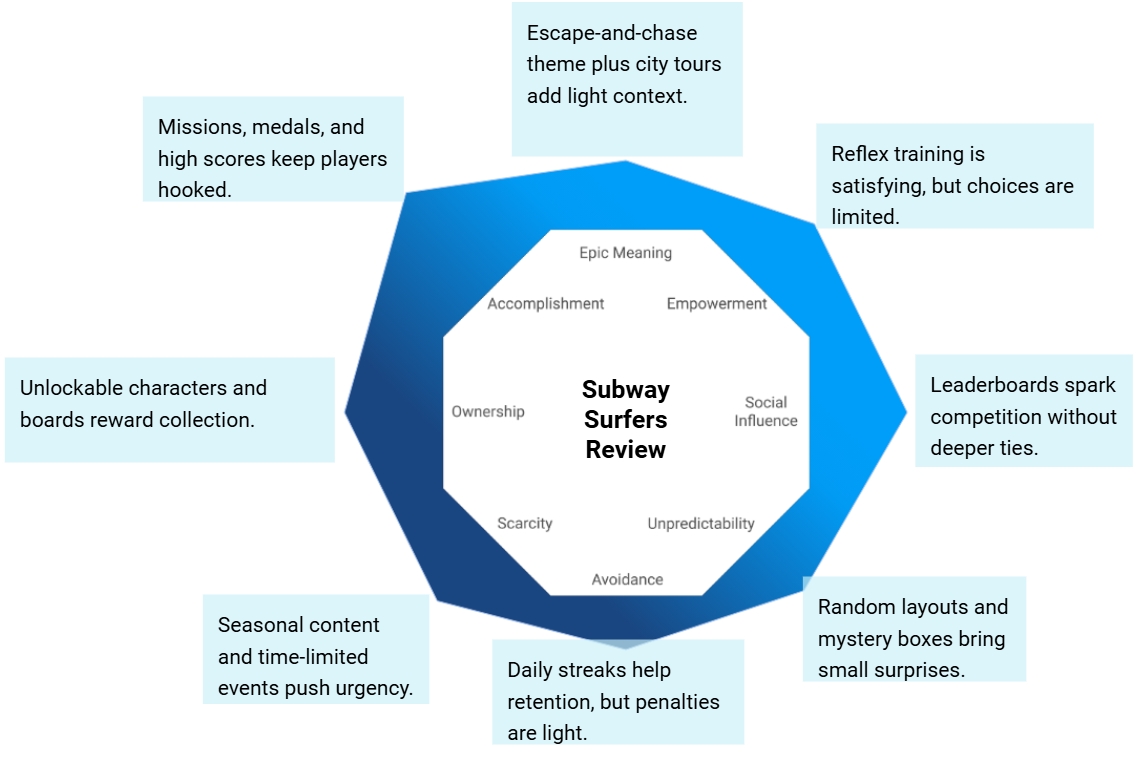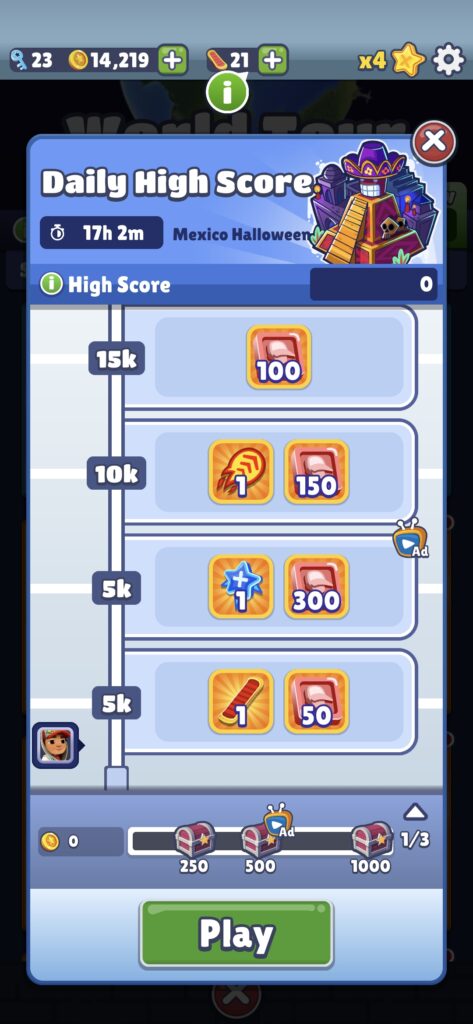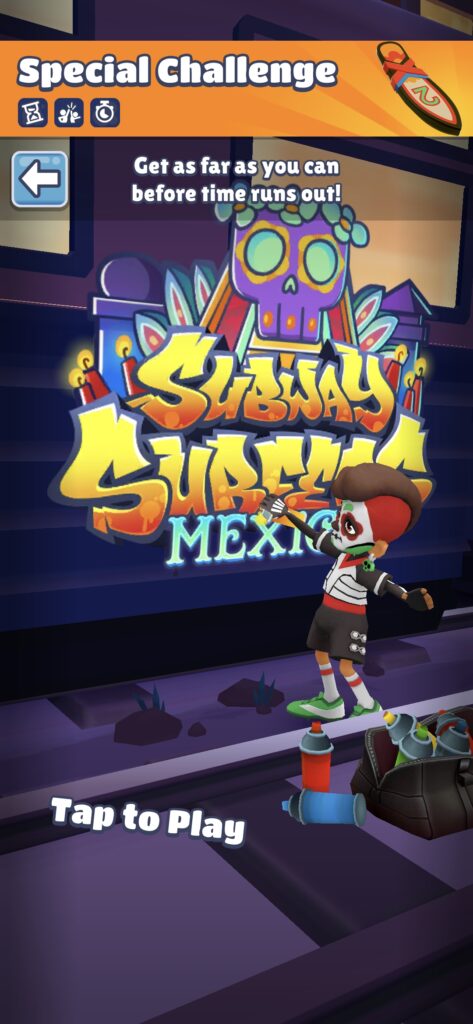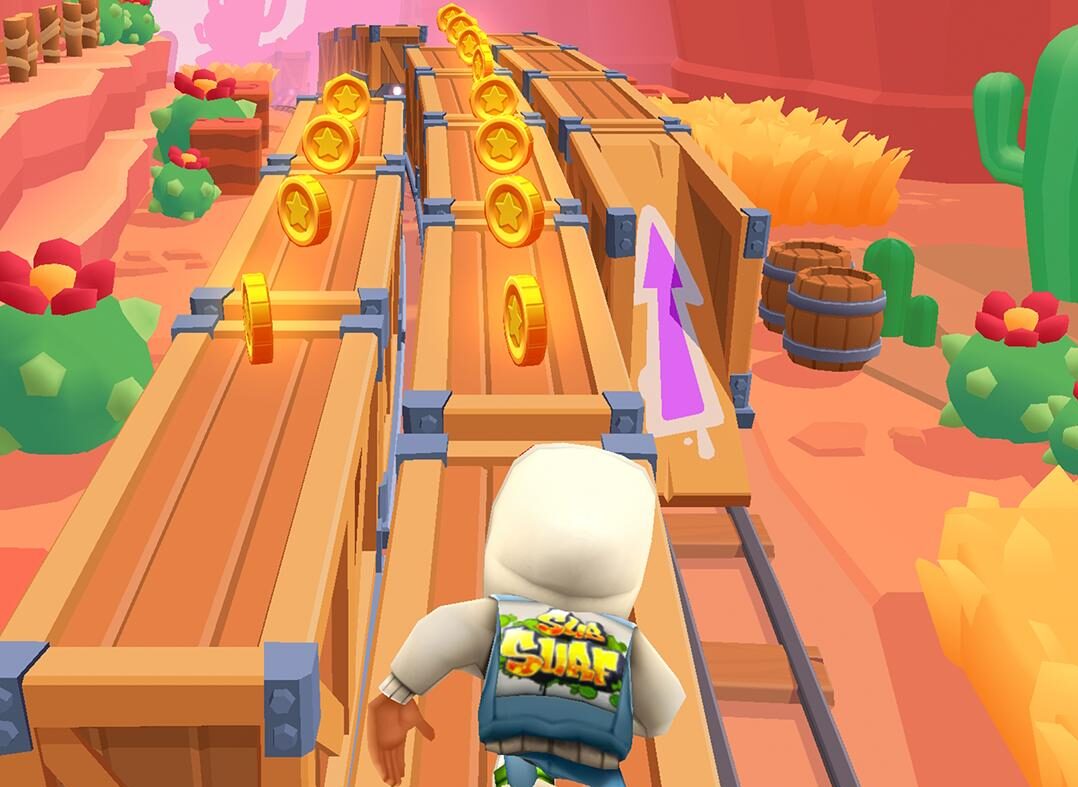Subway Surfers has been sitting near the top of mobile gaming charts for more than a decade, and it’s hard to find a player who hasn’t tried it at least once. First launched in 2012 by SYBO Games, this endless runner has been downloaded over four billion times and still gets regular “World Tour” updates. Let’s look at how the game holds up today using Yu-kai Chou’s Octalysis Framework.
Octalysis Rating Table
| Core Drive | Score (1-10) | Evaluation Description |
|---|---|---|
| Meaning | 5 | Escape-and-chase theme plus city tours add light context. |
| Accomplishment | 9 | Missions, medals, and high scores keep players hooked. |
| Empowerment | 6 | Reflex training is satisfying, but choices are limited. |
| Ownership | 7 | Unlockable characters and boards reward collection. |
| Social Influence | 7 | Leaderboards spark competition without deeper ties. |
| Scarcity | 6 | Seasonal content and time-limited events push urgency. |
| Unpredictability | 5 | Random layouts and mystery boxes bring small surprises. |
| Avoidance | 4 | Daily streaks help retention, but penalties are light. |
GScore: 390
Evaluation Notes:
- Scoring range: 1–10. Higher scores reflect stronger implementation of the core drive and greater player motivation.
- GScore (Gamification Score): Calculated using the Octalysis Framework tool.
Octalysis Radar Chart

Detailed Analysis
1、Meaning (5/10)
The setup is simple: you’re a kid running from a guard and his dog, dodging trains along the way. Each “World Tour” update drops you into a new city with local landmarks, which adds charm but doesn’t go much deeper. The sense of meaning is playful, not profound—which is fine for a casual runner.
2、Accomplishment (9/10)
This is where Subway Surfers shines. Missions, medals, and leaderboard scores constantly feed your sense of progress. Lasting just a few seconds longer than your previous run feels oddly rewarding, and nothing beats the thrill of finally topping your own high score. Bright animations and score multipliers make those wins even sweeter.
3、Empowerment (6/10)
Over time, you get sharper—anticipating patterns, chaining smooth swipes, and making split-second decisions. Power-ups like jetpacks or hoverboards add short bursts of variety. Unlike puzzle games where you can try multiple solutions, here the mastery comes mainly from getting faster and cleaner at the same moves.

4、Ownership (7/10)
Collecting coins lets you unlock characters, hoverboards, and upgrades. Seasonal exclusives feel especially rewarding, since not everyone gets them. These items don’t really change how you play, but unlocking a rare board or outfit still feels satisfying to show off in your collection.
5、Social Influence (7/10)
Leaderboards do a lot of the heavy lifting here. Seeing friends’ scores pushes you to go again and again, trying to beat them. Beyond bragging rights and some share buttons, though, there’s not much interaction—you won’t find gifting, co-op, or chat features.
6、Scarcity (6/10)
Seasonal events and limited-time rewards keep people logging back in. Missing an event can mean losing access to special content, which taps into FOMO. Since most rewards are cosmetic, the pressure is real but not overwhelming.
7、Unpredictability (5/10)
No two runs look exactly alike thanks to the random train layouts, and mystery boxes provide the occasional surprise. Still, once you’ve played for a while, the loop feels predictable. There are no big twists or shocking mechanics that keep you guessing long-term.
8、Avoidance (4/10)
Daily streaks and login rewards gently nudge you to return. But skipping a day doesn’t punish you much—you just miss a small bonus. The relaxed approach makes it less stressful than other mobile titles, though it also weakens this drive.
Recently, Subway Surfers has relaunched its Halloween theme, and the in-game world looks absolutely fantastic!

Overall Summary
The Octalysis footprint of Subway Surfers leans heavily on Accomplishment, Ownership, and Social Influence, with light touches of scarcity to keep momentum. This balance fits perfectly for casual players who want short, skill-based runs with visible rewards.
The fact that people are still playing after more than ten years says a lot. It’s not deep or groundbreaking, but it’s polished, simple, and still addictive enough to stick around.
[Read More] https://us.09gamereview.com/blog/
[YouTube] https://www.youtube.com/@09GameReview


Leave a Reply